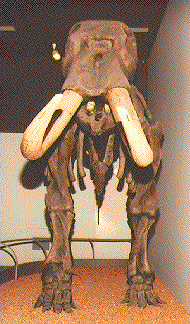
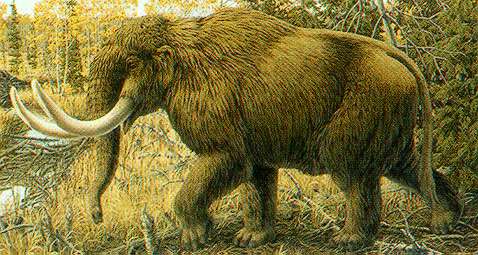
The American mastodon (scientific name Mammut americanum) roamed North America from at least 3.75 million to 11,000 years ago. Mastodons, along with mammoths and modern elephants, are members of the order Proboscidea. As adults they stood between 2.5 and 3 meters (8-10 feet) at the shoulder and weighed betweeen 3500 and 5400 kilograms (4-6 tons).
Mastodons became extinct approximately 11,000 years ago. Today, paleontologists are trying to understand why.
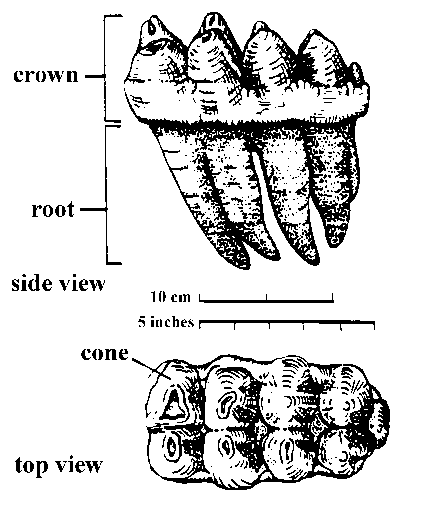
Their teeth had blunt cones. Mastodons probably used these teeth, as well as their tusks, to browse on herbs, shrubs, and trees. This drawing shows a side view and a top view of a typical upper third molar of an American mastodon.

A mounted skeleton of a mastodon is on display in the Changes exhibit at the Illinois State Museum in Springfield, Illinois. The skeleton is a composite of several mastodon skeletons found during excavations at Boney Springs in central Missouri. These excavations took place in the late 1960s and early 1970s and were directed by staff from the Illinois State Museum. To see photographs of this excavations, go to our Gallery.
In the picture to the right, Marion Hoffman, Jim McGregor, and Dorothy Langer are working on the nearly completed mastodon mount for the museum. The picture was taken in the fall of 1974 shortly before the mount went on exhibit. The mount has an internal armature; this means that none of the supporting structure can be seen when viewing the mastodon.
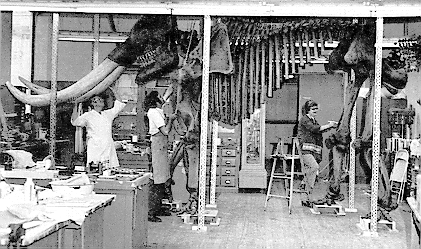
During the late 1980s and early 1990s, this scene again became a familiar one at the Illinois State Museum. This is because teams of scientists and artists under the direction of Dr. Russell W. Graham produced and assembled mastodon skeleton casts for other museums.
This picture shows the mastodon skelton mount produced for the museum at Mastodon State Historic Site (Jefferson County, Missouri) by the Illinois State Museum. It is composed of polyester resin and fiberglass and is supported by an internal steel frame.
The ISM has produced custom mastodon mounts for the following institutions:
Pink Palace Museum (Memphis, Tennessee)
Mastodon State Historic Site (Kimmswick, Missouori)
Peale Museum (Baltimore, Maryland)
Dayton Museum of Natural History (Dayton, Ohio)
Museum of Arts and Sciences (Rochester, New York)
Houston Museum of Natural Sciences (Houston, Texas)
Grand Rapids Public Museum (Grand Rapids, Michigan)
Canadian Museum of Nature (Ottawa, Ontario, Canada)
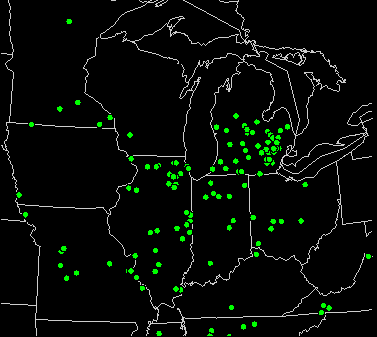
Mastodons are a common type of fossil in the midwestern U.S.. This map shows some of the sites at which the American mastodon has been found in the midwestern United States. The sites on this map are all relatively well-dated and well-studied. These sites contain mastodon remains that are between 40,000 and 11,000 years old.

This is an excellent example of a Clovis projectile point. It was found at the Kimmswick Site, Jefferson County, Missouri.
The point was found associated with the bones of American mastodons by a crew under the directorship of former ISM Curator of Geology Dr. Russell W. Graham.